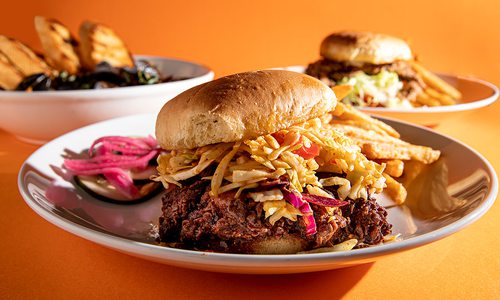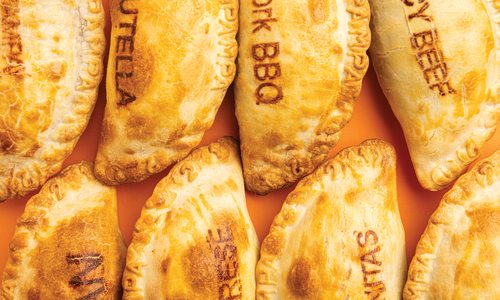Features
A Quick Guide to Shopping Asian Supermarkets in Springfield
We sought out some pro tips on how to shop the local Asian markets around Springfield, Missouri and zhuzh up ramen with ingredients you can purchase there.
by Tessa Cooper
Nov 2024

Tina Nguyen Bulger is a local food stylist and recipe developer, and she documents her love for cooking meals inspired by her Asian-American heritage on her Instagram account, @overthetable_food. We asked her how to shop the local Asian markets and zhuzh up ramen with ingredients you can purchase there. If you’ve ever felt a bit intimidated while trying to navigate the aisles, this is for you.
Lesson Number One
Stop and Ask for Directions
If you’re on the hunt for a specific ingredient, you can save yourself some time (and possibly a second trip) if you just ask the market attendant for help. “I often see a lot of people just wandering and looking a little lost,” Nguyen Bulger says. “Never be afraid to ask for help.”
Lesson Number Two
Shop the Outside Aisles
Don’t just stick to the fun candy and snack aisles. Just like at Western grocery stores, Asian markets tend to lay out their store with healthy and whole ingredients located around the perimeter.
Lesson Number Three
Be Prepared To Visit Multiple Markets
Nguyen Bulger notes that if you have a longer shopping list, you might not be able to check every item off at just one market. If she’s primarily on the hunt for Vietnamese ingredients, she usually begins her search at Binh Tay Oriental Market on West Sunshine. If her recipe calls for more Korean or fresh ingredients, she starts at Seoul Oriental Market on South Campbell instead. Last, the Asian World Market on South Campbell is her favorite catch-all market that stocks the essentials.
Recommended Shopping List and a Recipe to Improve Your Ramen
• Ramen Noodle Package: One of Nguyen Bulger’s go-to ramen packets is by Korean-based company Nongshim.
• Bok Choy: It can be hit or miss on whether or not you can find bok choy at the Asian markets. If you don’t have any luck, substitute a leafy green like spinach.
• Scallions: A sprinkle of chopped scallions will give a subtle onion taste to every bite.
• Enoki Mushroom: These long and skinny white mushrooms have an earthy umami flavor that goes well with pretty much any other type of add-in.
• Narutomaki Japanese Fish Cakes: You’ll find these in the frozen section, and they are the white flower-shaped discs with pink swirls that you often see in ramen.
• Kimchi: Just a dash of this spicy fermented cabbage will be quite the flavor bomb in your ramen.
• Soft-Boiled Egg: No bowl of ramen is complete in Nguyen Bulger’s eyes without a soft-boiled egg. The key is to boil it for just six minutes so the yolk is still a little jammy.
• Sushi Nori: All the delicious flavors from the seasonings in the broth will combine perfectly with the briny flavor in these dried seaweed sheets.
• Frozen Dumplings: We feel that no explanation is needed here because who doesn’t love dumplings in soup?
• Special Equipment (Optional): A Korean ramen cooking pot isn’t a necessity, but it’s hard to resist the shiny gold ones at Binh Tay Market that cost just ten bucks.
The Assembly
Line frozen dumplings on a cooking sheet, and let thaw at room temperature for 15 minutes. Meanwhile, heat water on the stove in a small saucepan and bring to a boil. Add one egg and let sit for six minutes before removing and placing in an ice water bath for 10 minutes. Peel and slice the egg. Chop the scallions. Slice off two pads of the fish cakes. Follow the preparation instructions on the ramen packet. Place the desired amount of add-ins in the pot in sections 1-2 minutes before the ramen finishes cooking. Remove the ramen from the heat and serve.












